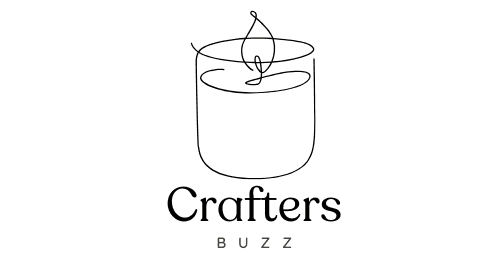An exploration of natural waxes like soy, coconut, and beeswax.
Natural waxes have gained significant attention in recent years, particularly as consumers become more conscious of the materials they use in their everyday lives. Derived from various plant and animal sources, these waxes offer a sustainable alternative to synthetic options, which often contain harmful chemicals and contribute to environmental degradation. The growing popularity of natural waxes can be attributed to their versatility, eco-friendliness, and the myriad of applications they have across different industries, including cosmetics, food packaging, and candle making.
Among the most commonly used natural waxes are soy wax, coconut wax, and beeswax. Each of these waxes possesses unique properties that make them suitable for specific applications. As the demand for sustainable products continues to rise, understanding the characteristics and benefits of these natural waxes becomes increasingly important.
This article delves into the properties of soy wax, the advantages of coconut wax, the versatility of beeswax, and how these natural waxes compare to one another. Additionally, we will explore their eco-friendly aspects and provide insights into DIY projects that utilize these materials.
Key Takeaways
- Natural waxes are derived from plants, animals, or minerals and have a wide range of uses in various industries.
- Soy wax is known for its clean-burning properties, long-lasting scent throw, and easy cleanup, making it a popular choice for candle making.
- Coconut wax offers a clean and slow burn, excellent scent throw, and a smooth and creamy appearance, making it ideal for luxury candles and skincare products.
- Beeswax is a versatile natural wax with a sweet honey scent, known for its long burn time, air-purifying properties, and ability to hold fragrance well.
- When comparing natural waxes, soy wax is best for container candles, coconut wax for luxury candles, and beeswax for natural skincare products and furniture polish.
Properties and Characteristics of Soy Wax
Soy wax is a hydrogenated form of soybean oil, which is derived from the seeds of the soybean plant. One of its most notable characteristics is its ability to burn cleanly and evenly, producing minimal soot compared to paraffin wax. This property makes soy wax an excellent choice for candle making, as it not only enhances the overall aesthetic but also contributes to a healthier indoor environment.
The melting point of soy wax typically ranges from 120°F to 180°F, allowing for a variety of applications beyond candles, such as in cosmetics and personal care products. Another significant property of soy wax is its excellent scent throw. When used in candles, soy wax can hold a higher percentage of fragrance oils compared to other types of wax.
This means that candles made from soy wax can emit a more potent aroma when burned, creating a more immersive sensory experience. Additionally, soy wax is biodegradable and renewable, making it an environmentally friendly option. The cultivation of soybeans also supports agricultural economies, particularly in regions where soybean farming is prevalent.
Benefits and Uses of Coconut Wax
Coconut wax is derived from the meat of coconuts and is often blended with other natural waxes to enhance its performance. One of the primary benefits of coconut wax is its ability to burn longer than many other types of waxes, including paraffin and even soy. This extended burn time makes coconut wax an attractive option for candle makers who want to provide consumers with a longer-lasting product.
Furthermore, coconut wax has a low melting point, which allows for a smooth and creamy texture that can enhance the visual appeal of candles. In addition to its aesthetic qualities, coconut wax is known for its exceptional scent throw. It has a unique ability to hold fragrance oils well, resulting in candles that release delightful aromas throughout their burn time.
This characteristic makes coconut wax particularly popular among artisan candle makers who prioritize scent quality in their products. Beyond candle making, coconut wax is also used in cosmetics and skincare formulations due to its moisturizing properties. It can be found in lip balms, lotions, and other personal care items where a smooth application and nourishing benefits are desired.
The Versatility of Beeswax
Beeswax is a natural wax produced by honeybees and has been used for centuries in various applications. One of its most remarkable properties is its ability to create a barrier against moisture while still allowing for breathability. This characteristic makes beeswax an ideal choice for food wraps, as it helps preserve freshness without trapping moisture that could lead to spoilage.
Additionally, beeswax has natural antibacterial properties, which further enhances its suitability for food-related applications. The versatility of beeswax extends beyond food preservation; it is also widely used in cosmetics and personal care products. Its emollient properties make it an excellent ingredient in lip balms, creams, and salves, providing hydration while forming a protective layer on the skin.
Furthermore, beeswax can be used in crafting candles that burn longer and cleaner than those made from synthetic alternatives. The warm glow produced by beeswax candles is often considered more inviting than that of paraffin candles, making them a popular choice for home decor and special occasions.
When comparing soy wax, coconut wax, and beeswax, it becomes evident that each type has its own strengths and weaknesses depending on the intended application. Soy wax is often favored for its affordability and clean-burning properties, making it a popular choice among mass-produced candle manufacturers. Its ability to hold fragrance well also makes it appealing for scented candles.
However, some consumers may prefer coconut wax for its longer burn time and luxurious texture, which can elevate the overall experience of using candles. Beeswax stands out due to its unique properties that set it apart from both soy and coconut waxes. While it may be more expensive than the other two options, its natural antibacterial qualities and moisture barrier make it invaluable for specific applications like food wraps and skincare products.
Additionally, beeswax candles are known for their subtle honey scent and bright flame, which many people find appealing. Ultimately, the choice between these natural waxes will depend on individual preferences regarding sustainability, performance, and specific use cases.
Sustainable and Eco-Friendly Aspects of Natural Waxes
The sustainability of natural waxes is one of their most compelling attributes. Soy wax is derived from renewable resources—soybeans—which are cultivated in many regions around the world. When sourced responsibly from non-GMO crops, soy wax can be considered an eco-friendly option that supports sustainable agriculture practices.
Furthermore, the production process for soy wax typically involves fewer harmful chemicals compared to synthetic alternatives. Coconut wax also boasts sustainability credentials due to its derivation from coconuts, which are grown in tropical regions with minimal environmental impact when harvested responsibly. The cultivation of coconut palms can contribute positively to local economies while providing a renewable source of raw material for various products.
Beeswax production is inherently sustainable as well; beekeeping practices can promote biodiversity and support healthy ecosystems through pollination. However, it is essential to source beeswax from ethical beekeepers who prioritize the well-being of their hives.
DIY Projects and Crafts Using Natural Waxes
Natural waxes lend themselves beautifully to a variety of DIY projects and crafts that allow individuals to express their creativity while utilizing sustainable materials. Candle making is perhaps one of the most popular applications for natural waxes like soy, coconut, and beeswax. Crafting homemade candles not only provides a personalized touch but also allows crafters to experiment with different scents and colors while avoiding harmful additives found in commercial products.
In addition to candle making, natural waxes can be used in creating homemade cosmetics such as lip balms or salves. For instance, combining beeswax with carrier oils like coconut or jojoba oil can yield a nourishing lip balm that hydrates while providing a protective barrier against environmental elements. Furthermore, natural waxes can be employed in crafting food wraps by infusing cotton fabric with melted beeswax or soy wax mixed with resin.
These reusable wraps serve as an eco-friendly alternative to plastic wrap for food storage.
Embracing the Beauty of Natural Waxes
Natural waxes represent a harmonious blend of functionality and sustainability that appeals to modern consumers seeking eco-friendly alternatives in their daily lives. With distinct properties that cater to various applications—from candle making to skincare—soy wax, coconut wax, and beeswax each offer unique benefits that enhance their desirability in both commercial products and DIY projects alike. As awareness grows regarding the environmental impact of synthetic materials, embracing natural waxes becomes not just a trend but a conscious lifestyle choice that supports sustainability while celebrating the beauty of nature’s offerings.
If you are interested in learning more about natural waxes like soy, coconut, and beeswax, you may also want to check out this article on how to stop a candle from smoking. This article provides helpful tips and tricks for ensuring a clean and efficient burn when using candles made from these natural waxes. For more crafting and candle-related content, be sure to visit the Crafters Buzz blog. Additionally, if you are curious about alternative ways to enjoy your candles, you can read about how to use a candle warmer on their website.
FAQs
What are natural waxes?
Natural waxes are organic compounds that are derived from plants, animals, or minerals. They are commonly used in various industries such as cosmetics, food, and pharmaceuticals.
What are some examples of natural waxes?
Some examples of natural waxes include soy wax, coconut wax, beeswax, carnauba wax, and candelilla wax. These waxes are often used in candle making, skincare products, and food packaging.
What are the benefits of using natural waxes?
Natural waxes are biodegradable, renewable, and non-toxic, making them a more environmentally friendly option compared to synthetic waxes. They also have a lower melting point, which allows for a longer and cleaner burn in candles.
How are natural waxes used in skincare products?
Natural waxes are commonly used in skincare products such as lip balms, lotions, and creams to provide emollient and protective properties. They help to lock in moisture and create a barrier on the skin to prevent water loss.
Are natural waxes sustainable?
Many natural waxes, such as soy wax and coconut wax, are considered sustainable as they are derived from renewable resources. Additionally, the production of natural waxes often has a lower environmental impact compared to petroleum-based waxes.












